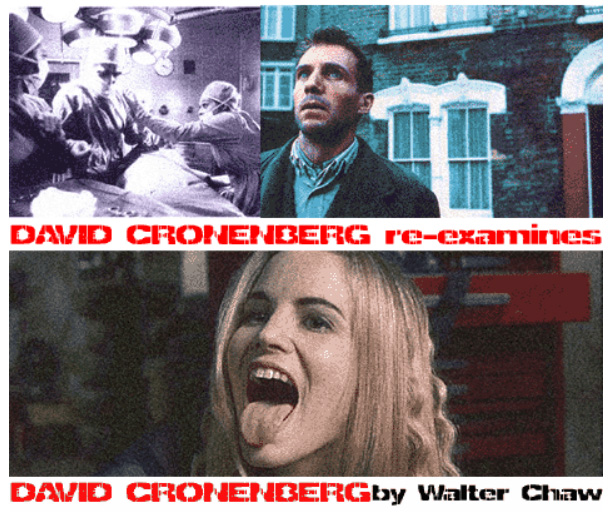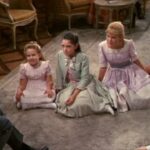**½/**** Image B+ Sound B Extras A-
starring Roger Moore, Yaphet Kotto, Jane Seymour, Clifton James
screenplay by Tom Mankiewicz, based on the novel by Ian Fleming
directed by Guy Hamilton
by Ian Pugh As a young teenager and budding cinephile, I owned all the Bond films on VHS. I remember watching Live and Let Die more often than any of the others, probably because–crushes on Jane Seymour notwithstanding–as a viewer without any working sense of social context, it was the easiest film of the series to just sit back and enjoy. No Cold War scenarios requiring global perspective, no long-standing rivalries requiring explanation; Thunderball perfected the infamous Bond formula to dubious ends, but this is the entry that endeared you to its simplicity. In his first turn in the role, Roger Moore's easygoing charm was a better fit for the youngest 007 neophytes than the rough, brutish Connery–and, despite being mired in a hopelessly-dated '70s landscape, the action sequences are sharply directed and tightly edited. In fact, they'd assure that the film would hold up pretty well today for more adult sensibilities…that is, if its script didn't revolve around James Bond fighting every single black person in the Western hemisphere.
|
Moore presented a rather jarring contrast to his predecessor with a Bond who unabashedly wore his emotions on his sleeve: He relished in the puns, invoked genuine rage during fight sequences, and expressed wide-eyed worry when placed in mortal peril. The filmmakers seemed to understand the differences in his interpretation of the role and toned down the "epic" aspects of the series accordingly. After four consecutive adventures facing off against Blofeld and SPECTRE, Live and Let Die sends Bond to Harlem and New Orleans in search of Mr. Big, a drug baron with a mysterious connection to blustery Caribbean diplomat/dictator Dr. Kananga (Yaphet Kotto). Unfortunately, screenwriter Tom Mankiewicz and director Guy Hamilton are still hung up on their previous collaboration, Diamonds Are Forever, and their insistence on maintaining a massive, all-encompassing conspiracy turns Mr. Big's operation into a "black SPECTRE," as a friend of mine described it with sarcastic accuracy. As Bond stumbles through Harlem with every African-American within a five-mile radius monitoring his every move, the scenario does little to understand racial boundaries, or even highlight Bond's ignorance of them; it only unwittingly validates white paranoia. It should come as no surprise that Mr. Big is merely an alias that allows Kananga to distribute his island's heroin supply in the States, but given that the film so thoroughly establishes Kananga as the antagonist right off the bat, the dramatic revelation of his double identity renders it a weak MacGuffin at best. With neither personality exhibiting much of their influence beyond the villainous scheme du jour, Live and Let Die draws uncomfortable correlations between black politicians and conniving drug dealers.
It's nowhere near Dr. No in terms of blind racism–indeed, the inclusion of Bond's quick-witted ally Quarrel Junior primarily serves as an apology for the character's father, the Stepin Fetchit of 1962–but in its attempt to forge a kinship with blaxploitation films, Live and Let Die only manages to stress how completely oblivious it is to modern concerns. (As Bond busts up a deadly tribal ritual on Kananga's native island of San Monique, his trademark Walther PPK has been oddly replaced with a more flagrantly colonial six-shooter.) As such, it's a little too easy to dismiss the thrills the film does offer when it's not making these kinds of awkward statements. A trek across the Louisiana Bayou facilitates an easy critique of the entire film: A manic boat chase would keep you at rapt attention if it weren't periodically interrupted by the slapstick antics of bigoted redneck sheriff J.W. Pepper (Clifton James). Someone certainly thought Pepper was hilarious enough to break up the action and essentially destroy the film's half-stated pleas for legitimacy. And, perhaps more tragically, someone thought he was hilarious enough to bring him back in the next film, helping force in the process some serious questions about the series' cultural value in the 1970s.
THE BLU-RAY DISC
by Bill Chambers Rebounding a bit from their disappointing Blu-ray presentation of Thunderball, MGM brings Live and Let Die to the format in a reasonably-filmlike 1.85:1, 1080p transfer that seems to butt up against a qualitative ceiling. As with Thunderball, flesh tones have a jaundiced cast, and there's an ineffable griminess deeply entrenched into the very pores of the somewhat flat image; unlike in Thunderball, there are splashes of vibrant colour (the green-yellow snake wielded in the voodoo sacrifices, the Rio Carnival décor of Solitaire's lair) that in and of themselves affirm the integrity/fidelity of the restoration–otherwise the whole thing would look so vivacious. I'm going to be generous and hypothesize that DP Ted Moore saw this as an opportunity to give a blaxploitation flick some Bondian flair rather than the other way around1. At least Lowry Digital went easier on the noise filters this time around: There's a fine scrim of grain throughout that's barely noticeable but appealing once you do pick up on it. Live and Let Die likewise sports a decent 5.1 remix in DTS-HD Master Lossless Audio; dialogue is crystal clear and the ambience generated by the major set-pieces is surprisingly immersive, if inexorably tinny. Thankfully, the title track by Paul McCartney–my personal favourite of the Bond themes–responds well to amplification and sounds absolutely electrifying in DTS. (It's always a buzzkill when you remember that the movie will not live up to the morbid promise of this rollicking anthem, though its closing reprise sends you out in a good mood.) A perfectly acceptable alternative, the original mono audio is also on board in DD 1.0.
The three (!) commentary options here are a mix of the new and the recycled. None other than Sir Roger Moore flies solo on the first track ("I'm the fellow down the end of the barrel"), John Cork comes through with another illuminating hodgepodge on the second (while now misidentifying it as "track one"), and screenwriter Tom Mankiewicz gets the third to himself. No disrespect to Moore, but he put me to sleep pretty quickly; it occurs to me that he needs a dance partner, because without one his considerable charm goes to waste. Same goes for Mankiewicz, really, the proof being his engaging rap sessions with Dick Donner on the DVD releases of Superman and Superman II. Mankiewicz and Moore too often let the crickets chirp, leading me to wonder why the enterprising Cork didn't intercut the two. (It's not as if either yakker is especially screen-specific.) Still, I always enjoying listening to Mankiewicz expound on the filmmaking process in his pack-a-day voice, and it's interesting, to say the least, toggling back-and-forth between his liberal guilt over the glib characterization of CIA operative Rosie Carver and actress Gloria Hendry's undying glee at having landed said part, which made her the first black Bond girl. Generally, though, the film's racial politics are treated like a landmine in all three yak-tracks.
Declassified: MI6 Vault launches with Chris Doll's "Bond 1973: The Lost Documentary" (22 mins., 480i), a piece that opens with producer Harry Saltzman revealing that Moore was their initial choice for On Her Majesty's Secret Service. Director Guy Hamilton is more reserved, insisting that Moore's "got to earn [the audience's] respect," at which point Moore himself addresses the camera to discuss the demands of the role in a sardonic way that I can't imagine inspired much confidence in contemporary viewers. Other highlights: Julius Harris demonstrating his mechanical arm poolside to a couple of half-enthralled children; Geoffrey Holder (who'll always be the "Ha-ha-haaa! Coool and refreshing!" 7-Up pitchman in my eyes) singing "Ode to Joy"; and young Jane Seymour in a skimpy bikini. As in Live and Let Die proper, the boat chase eventually hijacks the proceedings for an interminable spell, but it's moderately entertaining while it lasts. As we learn in "Roger Moore as James Bond, Circa 1964" (8 mins., 480i), Live and Let Die was technically Moore's second time in the saddle, having essayed a very paranoid take on the secret agent in this "Muppet Show"-esque sketch from Millicent Martin's variety program "Mainly Millicent". It's cute and well-choreographed, although it never knows when to quit. Finishing off this section, "Live and Let Die Conceptual Art" (2 mins., 480i) sees producer Michael Wilson narrating a brief and pointless evolutionary tour of the design concept for the film's poster.
Bypassing 007 Mission Control for obvious reasons, thus bringing us to Mission Dossier. (That sense of déjà vu you're experiencing is normal.) "Inside Live and Let Die" (30 mins., 1080i) tells us that Burt Reynolds was the front-runner to take over for the departing Sean Connery but ultimately deemed too short and not British enough. Phew. On that note, Mankiewicz reiterates an intriguing theory about what fundamentally distinguishes Moore from Connery: in scenes with women, Connery has the luxury of kissing or killing them; Moore can only get away with the former. This is an immanently watchable making-of, with Cork evidently feeling sufficiently liberated by the movie's hokum content to crack wise in subtitles over Seymour's talking head as she and Moore recall the persuasive psychic consultations they indulged in on set. (Moore's reading with a "witch doctor" was filmed and is excerpted here.) And holy shit, that walking-across-the-alligators'-backs stunt was real, executed six (!) times by 'gator farmer Ross Kananga, after whom Mankiewicz christened the villain2. One quibble, though: the interviewees use the terms alligator and crocodile interchangeably, and Cork never steps in to set the record straight. Doll returns behind the camera for "On Set with Roger Moore: The Funeral Parade" (2 mins., 480i), in which Moore explains his personal connection to actor Bob Dix as he watches the actor shoot his cameo from a nearby balcony. Lastly, "On Set with Roger Moore: Hang Gliding Lessons" (4 mins., 480i) sees the star passing the baton to stunt flier Bill Bennett, who makes it look so easy. The Ministry of Propaganda houses two trailers, three TV spots (including a commercial wherein the picture's cast and crew guzzle milk between takes), and two radio spots for Live and Let Die, while this disc's Image Database encompasses "The New 007," "Portraits," "The Filmmakers," "Ross Kananga," "Joie Chitwood's Driving team," "Mr. Big's Makeup," "James Bond and His Gadgets," "Marketing," and "Around the World with 007."
1. Let's not forget that United Artists, the studio 007 called home, was also the leading distributor of blaxploitation, having brought us, among many others, Black Caesar and Across 110th Street–the casts of which were raided when searching for black talent to plug into Live and Let Die. Something was definitely in the ether. return
2. Indeed, the real Kananga sounds like the sort of only-in-America character whose colourful life warrants at least a featurette of its own, if not a full-on Werner Herzog documentary. return




